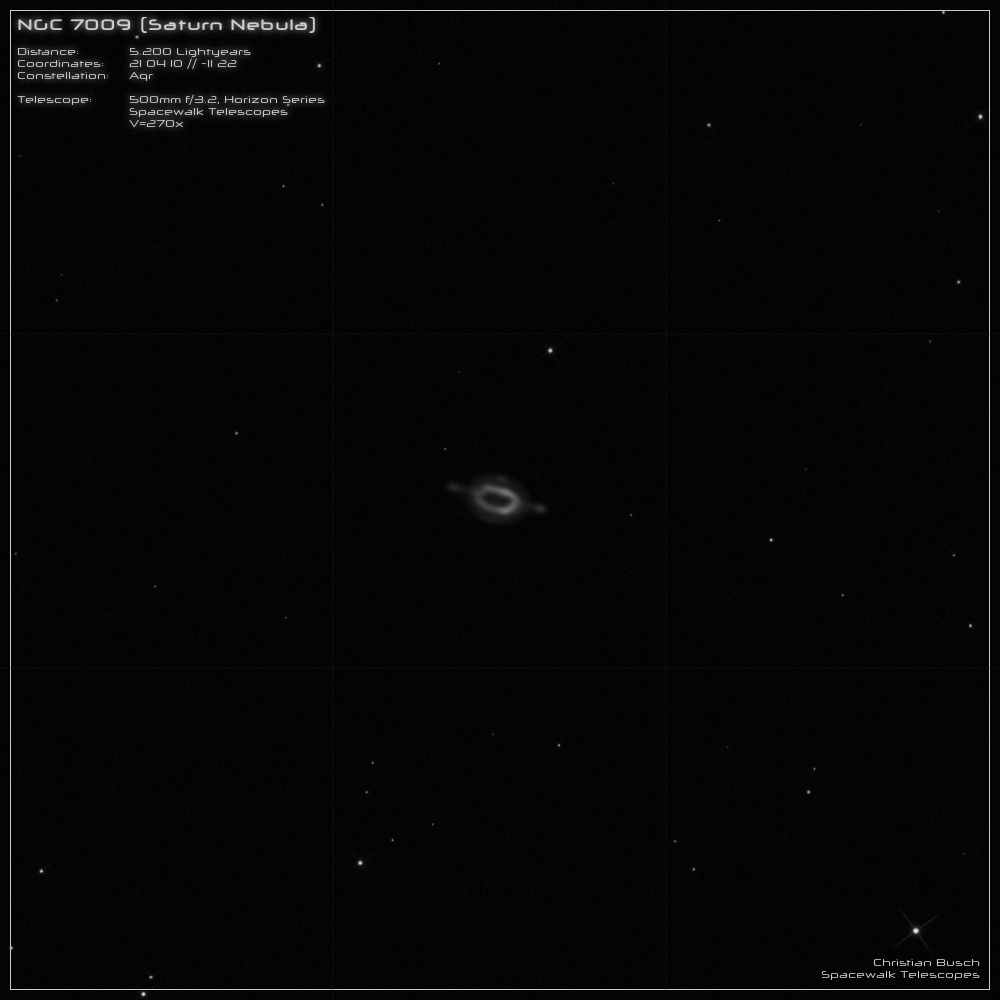NGC 7009 - Saturn Nebula
The Saturn Nebula NGC 7009 is located at a distance of about 5,000 light years in the constellation Aquarius. With a visual magnitude of 8.3mag
and an apparent extent of 30"x25" (arcseconds) it can be easily seen with smaller telescopes, perhaps a reason why it was discovered as early as 1782
by William Herschel and is therefor one of his first discoveries.
The nebula itself has a very complex shape with many different structures. An extended halo, several inner shells and material jets can be seen. Most
notable are two outward protruding "anses", which are particularly pronounced in NGC 7009 compared to other planetary nebulae. They have given the
PN its name because their overall shape is reminiscent of Saturn's rings. The diameter of the whole nebula is estimated to be 0.5 light-years.
The central star (ZS) has an apparent magnitude of 12.8mag and belongs to the group of white dwarfs. Its mass is given with 0.61 solar masses. The
effective temperature of 80.000 Kelvin leads to a luminosity of 5.000 Suns. For this reason the ZS emits enormous amounts of UV radiation, which
is sufficient to heat the surrounding nebula to a temperature of about 10,000 Kelvin.
----------------------------------------------------------------------------------------------------------------------------------------------
The Saturn Nebula is of course very easy to see in a 20" telescope. When looking into the eyepiece for the first time, you will notice the intense green
color, which comes from the doubly ionized oxygen. But the nebula becomes exciting only at high magnifications of 270x, which are easily achievable
due to the high surface brightness of the PN.
In the prominent inner ring some brighter spots can be seen. The ring itself is surrounded by a halo, in which a small knot can be observed in the
northern part. But this one is not easy to detect. The nodes of the anses are quite easy to see, but the link to the nebula requires a bit more patience.
The western anse appears a tick brighter than the eastern one. Unfortunately I didn't pay attention to the central star...

